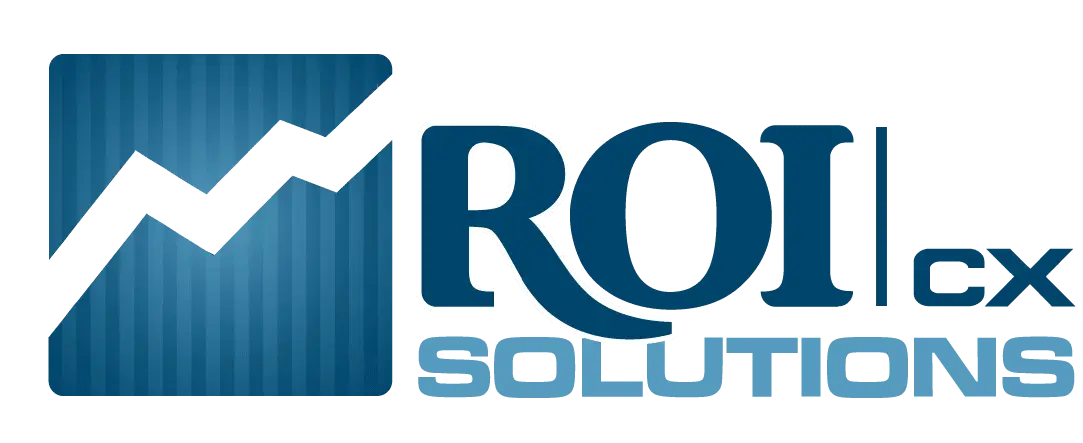What is the Difference Between Inbound and Outbound Call Centers?
16-Minute Read
Table of contents
- What is an inbound call center?
- What is an outbound call center?
- What is the difference between inbound and outbound call centers?
- Types of inbound calls
- Two categories of outbound calls
- Types of outbound calls
- Skills needed for inbound vs outbound calls
- Technology used by inbound call centers vs outbound call centers
- Examples of inbound call center uses vs outbound call center uses
- Inbound and outbound call center services – What’s right for you
Introduction
Inbound and outbound call centers are two sides of the same coin, both handling essential business functions, but focused in opposite directions. Understanding the differences between inbound and outbound call centers and their unique value will help you determine their utility for your business. Let’s take a look at some of the important differences between inbound and outbound call centers and what each brings to a business.
Key takeaways
- Inbound and Outbound Meanings: Inbound call centers are meant to handle a variety of incoming calls, usually those in the realms of customer service, tech support, and all manner of general questions. Outbound call centers make the calls, bringing in potential customers through sales, lead generation, and market research.
- Types of Inbound Calls: Inbound come in several different flavors, from customer service and tech support, to account management and billing services. Inbound calls can also handle tasks like inbound sales, payment, and order processing, and general inquiries.
- Types of Outbound Calls: Outbound call centers perform a variety of outward-facing calls, such as cold and warm sales calls, lead generation, market research, and even setting appointments.
What is an inbound call center?

Just as the name implies, inbound call centers handle mainly inbound phone calls from customers and potential customers. Given the nature of these calls, this type of call center tends to be more customer service-based.
Inbound call centers focus on answering questions and resolving customers’ concerns. Inbound call centers also deal with complaints from customers. Since they are the only contact many customers will ever have with your business, it’s imperative that these representatives are polite, helpful, and well-versed in company policy.
What is an outbound call center?
In contrast to inbound call centers, outbound call centers tend to make more calls than they receive. Their main focus is reaching out to customers and potential customers, making sales, and publicizing the company.
Representatives in these call centers typically work from lists of current or potential customers. This allows them to make sales and cold calls, and spend time helping customers upgrade their services.
What is the difference between inbound and outbound call centers?
In short, inbound and outbound call centers are opposites. As the name suggests, inbound call centers receive calls from customers or interested consumers, while outbound call centers make calls to leads or prospects in an attempt to make a sale. As a result, inbound call centers generally focus on building customer loyalty, improving customer retention, and providing excellent customer service in response to any customer questions or concerns. Outbound call centers, on the other hand, look to build or deepen interest for potential customers to move them further along the purchase funnel.
| Inbound Call Centers | Outbound Call Centers |
|---|---|
| Takes incoming calls from customers. Calls are usually centered around customer service or technical support queries. | Initiates outgoing calls to make new sales or to follow up with existing customers for cross-sales and upgrades. |
| Builds relationships with customers by practicing empathy and providing excellent support. | Generates leads, conducts market research, and makes sales. |
| Has the ability to take new orders for customers. Can prompt new sales and upgrades through customer interactions. | Has the ability to take new orders for customers. Can initiate new sales and create new leads through interactions with customers and prospective customers. |
Outsourcing your inbound teleservices can massively improve your customer experience. Take a deep dive into the benefits of inbound call centers!
Types of inbound calls
Inbound calls come in all shapes and sizes, but they tend to fall into one of four categories.
1) Customer service
This is when a current customer calls with a question or concern, or to manage their account. These calls include:
- Returns
- Customer feedback
- Updates to mailing addresses
- Questions about policies, practices, and so forth
In many cases, these concerns can be addressed electronically, and many inbound call centers have begun playing recordings while customers are on hold, directing them to applicable online resources.
2) Technical support
This is where customers call when something breaks on their end. When a product isn’t functioning properly, customers tend to call in to try to resolve the problem. Whether it’s a cell phone that’s not receiving gifs, or a computer that won’t turn on, technical support tends to hear from customers who are less than happy with the current state of affairs.
Because of the disgruntled nature of most of the calls, inbound centers that handle technical support require staff with patience and level-headedness, capable of dealing with complaints and demands. With the right team, concerns can be answered and tempers cooled, restoring brand loyalty and encouraging repeat sales.
3) Inbound sales
In some instances, inbound call centers will receive calls not from current clientele, but rather from prospective buyers who are looking for more information. When this happens, it’s called an “inbound sales” call, and talented staff can capitalize on the opportunity. Tact and salesmanship are key here, and presenting a polite and welcoming face for the company can turn a lead into a customer.
Some larger businesses have entire call centers devoted specifically to inbound sales, rather than combining several types of calls. When this happens, the center can be staffed specifically with sales in mind, allowing the company to put its best foot forward.
During an inbound sales call, the representative should first aim to build a rapport with the prospect, establishing common ground and offering useful information. They should also let the prospect guide the conversation, ask open-ended questions, and be transparent to gain the prospect’s trust.
4) Upgrade and renewal inquiry calls
This form of inbound call communicates with existing customers who have chosen to renew, upgrade, or combine their subscription plans. Customers are typically satisfied with the level of service they receive from the business, leading them to continue the relationship.
Inbound center agents should be familiar with the company’s entire product line, ongoing promotions, and the benefits of retaining or upgrading their plans. In addition to being knowledgeable and convincing, they must be trained to process the renewal or upgrade themselves or assist the customers by routing the call to an authorized sales agent for plan expansion.
5) Payment and order processing
In this day and age, online ordering is by and large the norm, but there are still many people who place orders over the phone. For that reason, some inbound calls to call centers will be focused on completing, processing, or managing purchases. Shoppers are also likely to call in with questions about the billing process for their purchases and solve problems with payment.
6) General inquiries
Customers will always have questions about your products and services. Whether they need to know your hours, get more info about certain offerings, or manage some aspect of their account, a call center agent will need to know your business backward and forward to reliably assist any inbound caller.
Two categories of outbound calls

While there are some outliers (such as political organizations conducting polls, and companies conducting surveys regarding service and product quality, or market research), outbound call centers tend to focus on sales, and the calls fall into one of two categories.
1) Cold calls
Cold calls are made to potential customers who weren’t expecting the contact. Their first interaction with the company is this phone call, for better or worse. Depending on the individual receiving the call, this can create feelings of frustration and distrust on the part of the potential customer, making it harder to close the sale.
The staff of cold call outbound call centers needs a thick skin, as those who don’t appreciate the call often express their disapproval. For teams that can tough it out, though, there are some sales to be made.
2) Warm calls
Warm calls, unlike cold calls, are the result of some previous interaction with the lead. Whether it’s a referral, an interaction at a convention or meetup, or a previous call. Because the lead is expecting the call, these calls are usually better received, and as a result, have better conversion rates.
Types of outbound calls
1) Appointment setting
Outbound agents schedule meetings or setting appointments between the customer or lead and the assigned salesperson. They will confirm the best time and date for the current or potential client to interact with a company representative. The agent should be efficient and accurate but also engaging, to keep the prospect motivated to stay in touch.
2) Lead generation
Outbound agents create leads via warm and cold calls, recognizing opportunities to pique an individual’s interest in the company’s products. They gather information during the call to determine the likelihood that a prospect will convert from being simply curious to becoming a customer.
3) Telemarketing
Telemarketing is different from lead generation—in fact, you might compare the former to being a door-to-door salesperson. These sales agents pitch their products over the phone based on a given target list. They generate interest in the product or service by telling prospects how it can be the best solution for their needs.
Growing a business is easier when you outsource telemarketing services to a trusted partner!
4) Telesales
Often lumped in with telemarketing, telesales has a different end goal in mind—to close the sale. Sales agents usually take over where the role of telemarketers ends. They have to be patient and persuasive, both for pursuing qualified leads and then converting them into sales.
It’s crucial for telesales agents to have a good list of qualified leads since their performance primarily depends on conversion rates.
5) Market research
Outbound calls are not always for closing sales—some are made to get the pulse of a product, service, or brand. During the call, an agent will ask a set of questions prepared by the market researcher or business concerned to learn more about the target audience (and their perception of the company or product). Data gathered will be used to modify products or adjust marketing strategies.
Skills needed for inbound vs outbound calls

While many skills are transferable from call to call, regardless of whether it is inbound or outbound, both situation have there own unique needs.
Inbound call skills
- Listening: If a customer is calling in, that inherently means that they have something to say. Whether they are experiencing difficulties with your product or service, they need to manage something with their account, or if they are merely curious about something, it’s important for agents handling inbound calls to hear what customers have to say and understand what they need.
- Problem-Solving: Though there are ideally resources available to help agents answer questions and handle problems, there is still a need for agents to have an agile mind and an ability to think on their feet.
- Patience, Empathy, & Coolness Under Pressure: In many situations, inbound callers might be calling in while in a heightened emotional state. Callers might also have poor communication skills. An agent handling an inbound call should not only have a thick skin and an ability to provide difficult callers with the benefit of the doubt but also patience for callers with difficulty communicating and a curiosity about their problems.
- Product & Service Knowledge: It goes without saying that in-depth knowledge and training on your company’s offerings will be an invaluable asset for inbound calls.
- Attention to Detail: Small details can make a big difference in an inbound call. You don’t want to miss a key piece of the puzzle that helps you solve the caller’s problem.
Outbound call skills
- Reading Customers: Most communication is non-verbal, and that includes communication over the phone. If you’re trying to make sales in outbound calls, it’s important to read between the lines of the conversation. Pay attention to a customer’s mood, the subtext of what they say, and their overall demeanor during each call.
- Time Awareness: An outbound call is usually unprompted by the recipient. In many cases, the call might interrupt them at a time when they have something to do or somewhere to be. Agents should be considerate of other people’s time, careful not to overstay their welcome, and understanding when customers need to cut the call short.
- Friendly But Assertive: Outbound calls always have some kind of objective. In order to reach those objectives, an agent should be confident and assertive because most people respond well when someone sounds like they know what they’re talking about. However, great care should be taken to avoid crossing the boundary into pushiness, because nothing is more off-putting to potential customers than an outbound agent that won’t take no for an answer.
Technology used by inbound call centers vs outbound call centers
Though much of the technology used in inbound call centers can be used in outbound applications, some are best suited to one or the other. Here are some of the important technologies that are uniquely useful in both situations.
Inbound contact center technologies
- Interactive Voice Response (IVR): IVR is often an essential first step in the inbound call process, gathering key pieces of information from callers using natural-feeling voice-activated prompts. The information gathered at this stage can be instrumental in routing callers to the correct agents or departments. Speaking of which…
- Call Routing: Using area codes, customer management systems, and early-stage information gathering, call centers can have protocols and procedures in place to ensure that each inbound call is automatically routed directly to someone who is best equipped to help the customer in question.
- Call Center Analytics Software: Inbound call centers in particular need to track a variety of team performance statistics, metrics like call volumes, and many others.
Outbound contact center technologies
- Auto Dialers: Outbound agents have a lot of things to keep track of, so it makes sense to take some of the more easy-to-optimize tasks off their plate. Auto dialers are a great efficiency tool that takes the tedious task of manual dialing off your agent’s plates, allowing them to focus on what they excel at — conversion.
Businesses like yours can often save money by outsourcing to an offshore call center!
Examples of inbound call center uses vs outbound call center uses
Depending on your precise business goals and the unique challenges you face, you might need either an inbound call center, an outbound call center, or some combination of the two. But what are inbound and outbound, respectfully, used for?
For an inbound call center to be a smart solution, you should be sure that your audience is already familiar with your products and services, and that they are in need of official customer support. Outbound call centers, on the other hand, are a great option when you are in need of marketing, sales, lead generation, research, or other means of reaching a wider audience.
Other goals and pain points to keep in mind when determining whether you need inbound or outbound call center services include:
Inbound
- High Volume of Customer Service Inquiries: If your business is having a difficult time keeping up with the demand of your customer service inquiries, inbound is an excellent option.
- Highly Technical Products: If you offer a product or service that is very technical in nature, and often requires expert technical support, inbound call center agents are a lifesaver.
- Scaling Customer Service Team: Inbound call centers can help you grow your current customer service team to scale up your current capacity.
Outbound
- Following Up with Leads: If your business has a large amount of leads to follow up on, and your current team is struggling to follow up on them, an outbound call center can be very helpful.
- Extensive Market or Customer Research: If you need to better understand the market you’re currently selling in, or gain a better idea of who your target customers are, outbound call centers can be instrumental in performing that research.
- Drive Sales: When you need to sell more products, one of the most intuitive and people-focused methods of doing so is by deploying an outbound call center.
Inbound and outbound call center services – What’s right for you
Whether you need help with inbound, outbound, or some combination of inbound and outbound calls, will all depend on which pain points your team is struggling to handle. If you can’t seem to keep up with the rate of customer service and tech support calls, then you could probably use the help of an inbound call center. If your team is having a hard time following up on a long list of leads, then an outbound call center might serve your business best.
In any case, if your business is growing and your team is stretched thin, you could likely benefit from call center services. Whether it’s a competent customer service team you need or some sales superstars who can get the word out about your incredible product or service, finding the right call center can make a world of difference.


![The Ultimate TCPA Compliance Checklist [A Step-by-Step Guide]](https://roicallcentersolutions.com/wp-content/uploads/2024/11/Image-1-shutterstock_2497397155-scaled-500x383.jpg)



